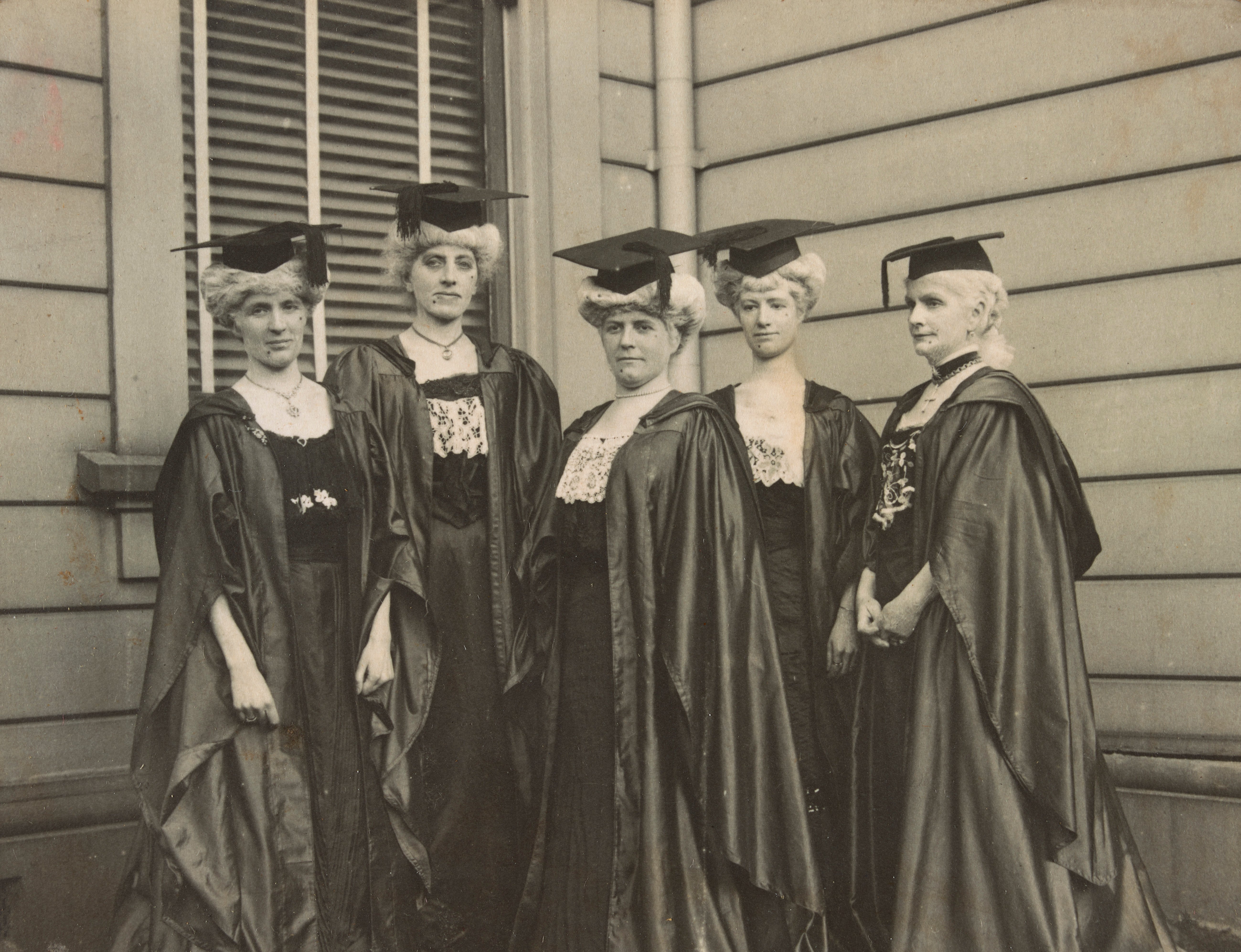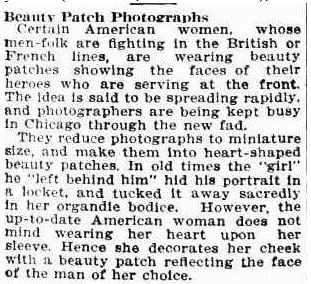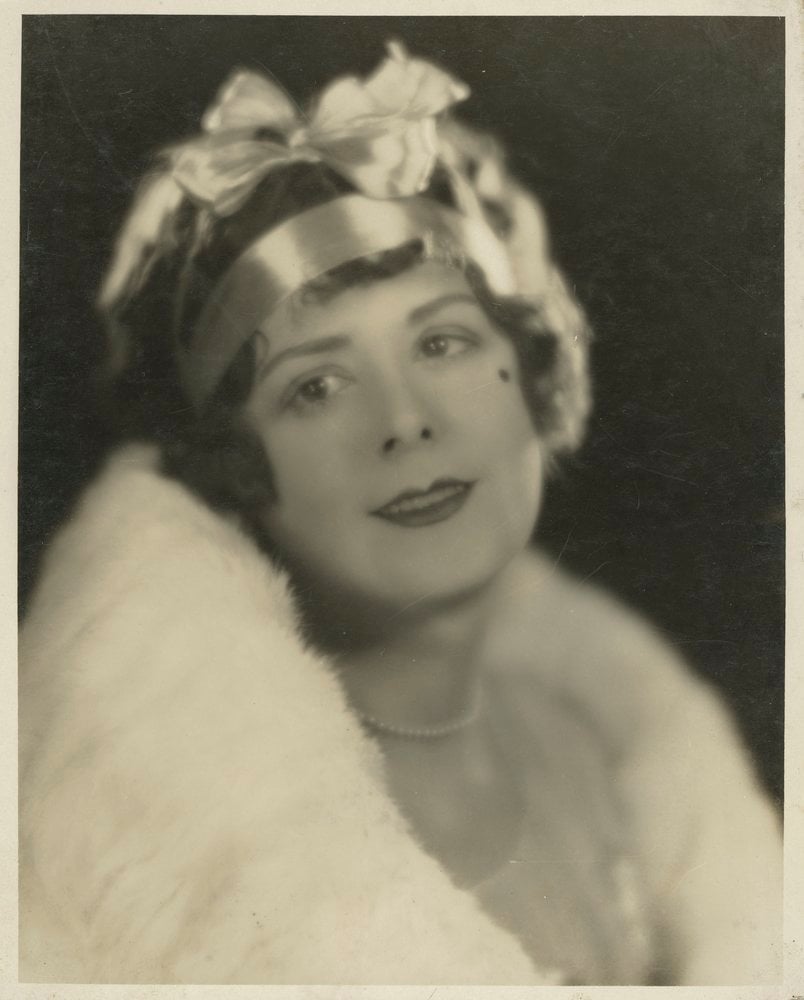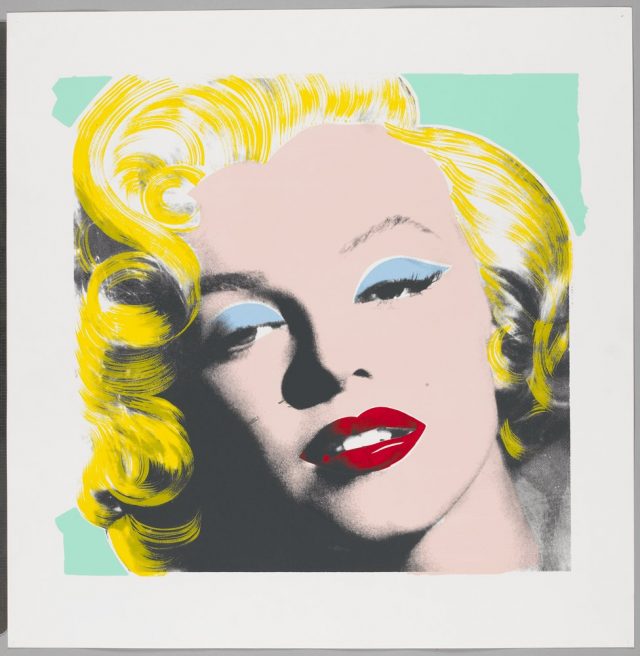What do we make of this intriguing photograph of women in academic gowns, white wigs and beauty spots? Appearing in an album from the Bland Holt Collection in the George Coppin theatre archive, it’s fair to guess they are dressed for a theatrical production – probably a comic one. It’s unclear though, what that production is, and why a group of women are dressed this way.
Looking closely, the beauty spots are in identical positions on four of the women’s faces and as will become apparent, it’s this positioning that lends comedy to this image.

Five women in academic gowns, wigs and beauty spots, gelatin silver photograph appearing on page 7 of a photographic album from the Bland Holt Family; part of the George Coppin Collection, Australian Manuscripts Collection, MS8827/13/PHO63
Beauty spots are associated with the high fashion beauties of the eighteenth century, when under the reign of Louis XVI, both men and women wore patches made of black velvet, highlighting the pale white-powdered skin. Originating as a means of hiding the unsightly scars of diseases like small pox or syphilis, they were expensive beauty products obtained from perfumeries, and came to represent status and wealth. They never lost their association with flirtation and sexual promiscuity though, and historians write of the meaning behind the position of each beauty patch:
‘…women who wanted to create the impression of impishness stuck them near the corner of the mouth; those who wanted to flirt chose the cheek; those in love put a beauty spot beside the eye; a spot on the chin indicated roguishness or playfulness, a patch on the nose cheekiness; the lip was preferred by the coquettish lady, and the forehead was reserved for the proud.’ [1]

Image 1: Talma & Co, Mrs Maesmore Morris, gelatin silver photograph with hand colouring, ca 1901–1911, Pictures Collection, H37081/37 Image 2: Johnstone, O’Shannessy & Co, Mrs Tavares, albumen silver photograph, 1879, Coppin Collection, Australian Manuscripts Collection, MS8827/13/PHO379
By the twentieth century, beauty spots were used to convey a variety of messages, bringing to mind the public declarations of love and loyalty, which today are usually emblazoned on t-shirts or tattoos rather than patches adhered to the face.
During WWI for example, women wore tiny photographs of their men away at war:

Weekly Times, 16 October 1915, p.9
The newspapers of the 1920s regularly posted articles in the ‘Women’s’ pages about the re-emerging vogue of the beauty spot. In this post-WWI incarnation, the epicentre of the trend was Paris, where women were reported wearing a beauty patch under one eye or at the corner of the mouth. Laden with symbolic meaning, the round or square black taffeta beauty patch was heading beyond the original purpose of accentuating a woman’s white skin, and was now available in various shapes, including crescents, stars, diamonds, and even black cats or horse shoes. Stars on the left side of the chin denoted frivolity; a heart on the left of the chin meant the woman was already engaged, and when married, the patch was moved to the right side. Patches on the forehead were for intellectual women, only to be approached by serious men.[2]

Actress Thelma Raye, gelatin silver photograph, ca 1910–1940, Pictures Collection, H2010.68/22
In 1926 columnists wrote of young women wearing beauty patches in the shape of little pigs or horses (or even whole processions of horses and carriages) on the back of the neck or shoulders. But one writer warns that this trend is for the young and plump, and not for older women with ‘corrugated napes’. [3]
Some commentators of the trend were quite scathing though, berating the fashion as enormously time consuming and questioned how women wearing them could possibly bathe regularly– for to bathe would mean having to discard the expensive patches, which the writer presumed the women would be reluctant to do. [4]
After WWII, when fashion was reverting to a more feminine look with longer skirt lengths, the beauty spot also made a come back. Initiated by the Duchess of Windsor, after a trip to the United States the vogue took off in Europe. [5]

The Sunday Mail, 4 April 1948, p.5
There are mixed opinions about what prompted the various resurgences in the popularity of beauty spots over the decades. Writers of the 1920s and 40s say that it was an attempt to revive femininity in fashion, while modern theorists interpret later trends– like the trend launched by Marilyn Monroe in the 1950s– as an attempt by women to flaunt their sexual appeal at a time of repression. The screenprint reproduced below only shows a slight hint of the beauty spot on her left cheek above her mouth.

Falconer Designs, Marilyn Monroe, silkscreen print on white paper, 1995, RedPlanet Archive, Pictures Collection, H2003.90/58
Olga Tsara, Librarian, Heritage Collections
References
[1] Katie Aske, ‘Beauty Spots and French Pox’, Early Modern Medicine, https://earlymodernmedicine.com/beauty-spots-and-french-pox/ (Viewed 27 December 2017)
[2] Northern Star, 3 December 1924, p.11
[3] Telegraph, 31 December 1926, p.13
[4] Gundagai Independent and Pastoral, Agricultural and Mining Advocate, 26 February 1913, p.6
[5] Daily Telegraph, 24 September, 1945, p. 14


Hi Olga,
I love the beauty patches, especially on the academic ladies. The photo of Thelma Raye is interesting too – she was the first wife of famous English actor Ronald Colman. Great blog!
Regards,
Sandra
Thanks Sandra. I’m glad you liked it! Olga
Hi Olga, Absolutely fascinating. What a wonderful blog! Sarah M
Thank you Sarah!
Could the women in academic gowns be something to do with Gilbert and Sullivan’s 1884 comic opera ‘Princess Ida’? It’s a comedy about a princess who founds a women-only university. It’s usually produced in a kind of fairytale fancy dress, but there might have been a modern dress production. The play became a reference point for the first generation of University women; the female undergraduates at Melbourne University formed a ‘Princess Ida’ club.
Thank you for your comment Gerard. That is a brilliant theory!